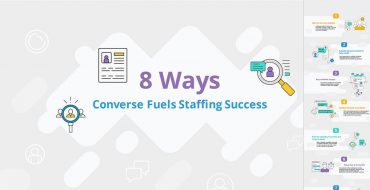
All it takes is 2 easy steps
If you're a winner, we will send you $100 Amazon gift card at Dreamforce!


We’re often asked what is Omnichannel as it relates to messaging? And how can you use Omnichannel to improve business responsiveness and marketing, sales and service results?
First, let’s talk about what is Omnichannel vs multichannel. These two similar terms have different meanings.
They simple difference? With Omnichannel you get seamless conversations blended together across channels.
These are just a few results that show why you want to adopt Omnichannel.
Omnichannel is most often thought of in relation to marketing. An Omnichannel marketing strategy means that every channel is integrated. Each channel responds to and updates customer data. Which means that each rep or user on different channels can use that data to be sure they are sharing relevant information, based on the conversation history of each individual.
In Omnichannel messaging, that means delivering seamless, continuing conversations,across all messaging platforms. For example:
Increasingly, buyers are toggling between online sites and offline brick and mortars to research and buy products and services. In a recent study, Deloitte found that digital experiences influence 56 cents of every dollar spent in physical stores.
Omnichannel for sales eliminated the traditional barriers between channels, weaving all communications together and sharing data between them. This empowers customers to conduct business with sales reps and companies however they want, and whenever they want. Reps can see every interaction, from marketing to prior sales conversations to service conversations.
Omnichannel messaging in sales empowers reps to see all messaging conversations across the entire buying journey, across all messaging platforms. For example:
By implementing an Omnichannel messaging strategy for sales, your reps handle more buyers (6:1 over phone calls), and research shows you’ll close 40% more sales with messaging as part of the sales cycle.
Omnichannel for service allows your customers to reach out to you on any platform, blending all of the conversations around one case so reps can respond with relevant resolution options. True Omnichannel eliminates the need for customers to wait on hold and repeat themselves to multiple reps.
Omnichannel messaging in service empowers agents to send and receive case messages from multiple messaging platforms, such as SMS, WhatsApp and Facebook. For example:
This speeds time-to-resolution and increases rep productivity, since they can handle 10x more cases with messaging than with phone calls.
The question everyone should be asking probably isn’t simply “What is Omnichannel?” The true question is “What is Omnichannel messaging and how can I quickly use it?”
Omnichannel doesn’t have to be complicated. When you have the right messaging platform, all of your messages are seamlessly integrated into a single CRM record. Then, permitted users and reps have the visibility they need, across the entire buying journey.
Going to Dreamforce ‘19? Be sure to stop by booth #210 to see Converse Omnichannel messaging in action. We’ll be demonstrating the use of Omnichannel messaging in service, blending SMS, MMS, Facebook and Whatsapp into seamless, full-visibility, customer service conversationsss.

Jun 22, 2022

Jul 30, 2019
Stay updated on business text messaging
Text MAGIC for Demo to
USA: 36343
AUS: (61)409564682
UK & ROW: +44 7860017509
Email: care@sms-magic.com